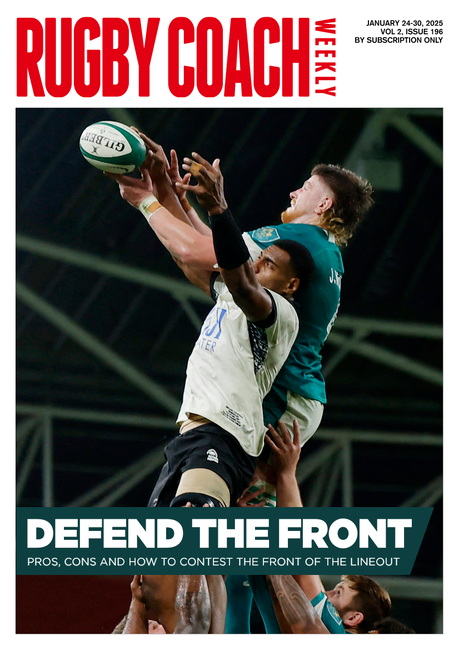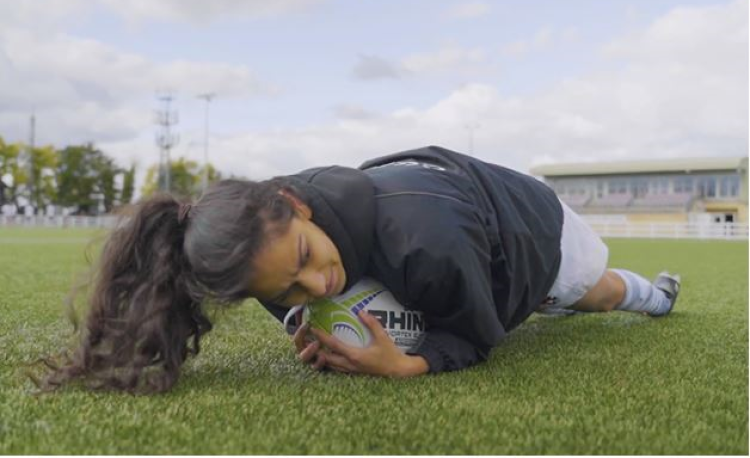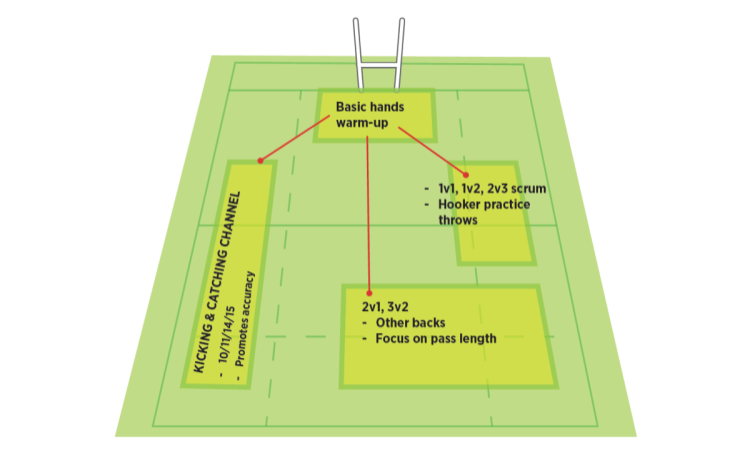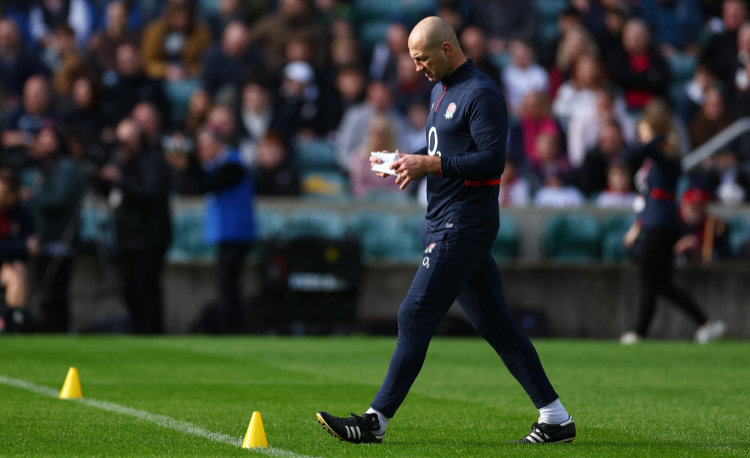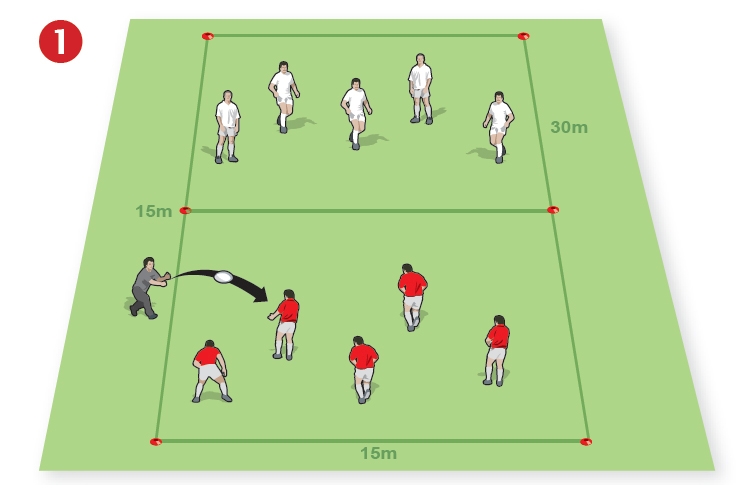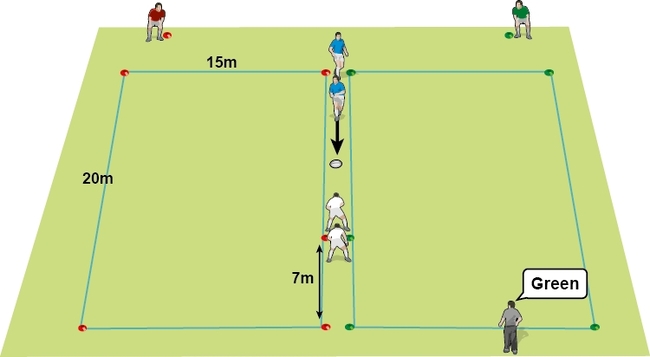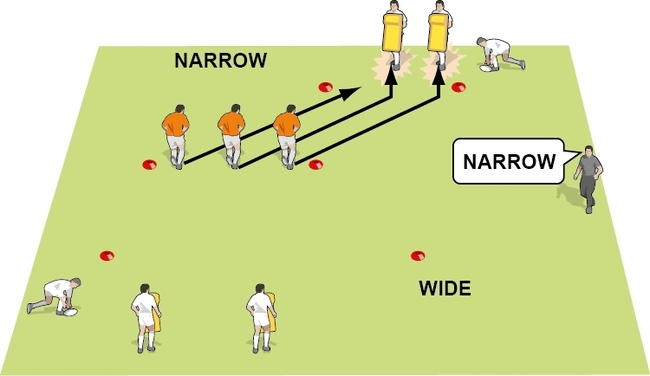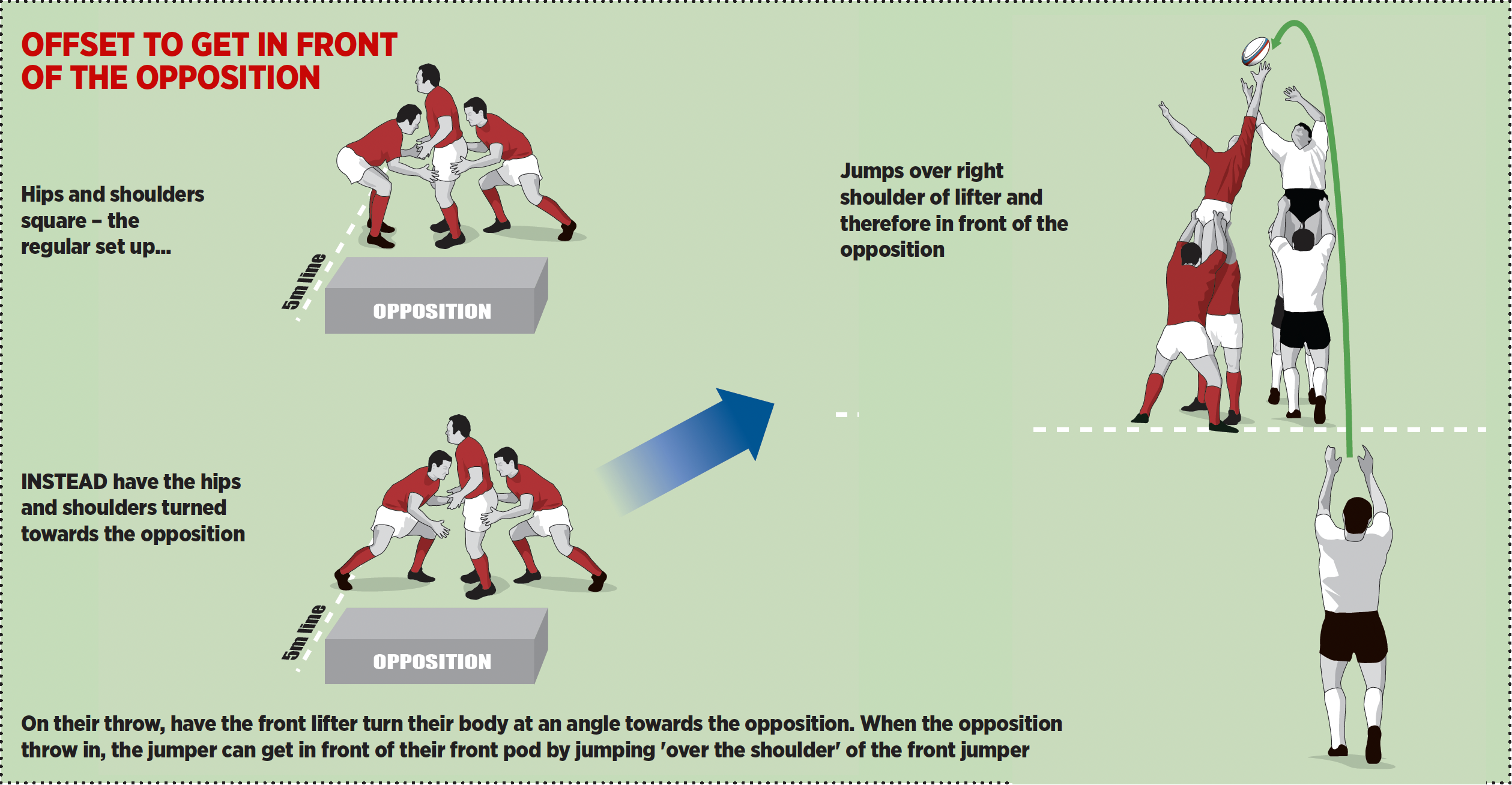Pre match rugby warm up drills
Warm-Upsby Dan Cottrell
The warm-up programme for a rugby match should be decided in advance of the day of the game. If possible, it should be kept the same for every game, with minor tweaks according to different variables, such as weather conditions and changes in personnel.
Mental preparation
Pre-match warm-ups are to alert the mind and body to the game about to be played, without the players getting overexcited or too fired up. The level of alertness needs to be raised slowly, to keep players as calm as possible when they go onto the pitch.
On the psychological side, pre-match rugby warm-up periods should be tactical, not strategic – so don’t stray from familiar territory. For example, make sure that any adjustments you suggest to playing tactics are small ones.
Do's and don'ts
Don't: Add new warm-up drills not used previously.
Do: Build the intensity gradually.
Don't: Start hours before kick off. Physical activity as a team should last for no more than 50 minutes before kick off, though players may want to go through organisational options earlier.
Do: Use game-related activities, especially exposure to contact.
Don't: Stop physical activity for more than 10 minutes, especially on cold days. Bodies cool down and the benefits of an increase in muscle temperature will be reduced.
Do: Make sure there is time for every player to know their role for the day.
Don't: Forget that the referee will want to talk to the team. Ask him long before you start the warm-up about when he wants to do so, as this will avoid disruption.
Do: Remember that different players have different ways to prepare themselves mentally – give them a chance to do so.
Don't: Talk about the season - talk about the match. Break the match down into segments and aim to achieve targets within that time scale.
Do: Allow time for individuals and small groups to practise their individual skills, such as kicking and high ball catching. Time spent here might count for more than a team drill.
Don't: Use ladders. They are a means to an end rather than being game specific. Players focus on a narrow technique, not the wider picture of the game and the skills required.
What should be in a pre-match warm-up?
1. Warm-up warm-up
Run one lap of the pitch to get a feel for all the conditions. Some players might choose this moment to change what they are going to wear (they may be too hot or too cold, or want to change their studs or cleats). Some sides have a little game of touch rugby, again ideal to get a feel for the conditions, as well as reduce the pressure levels.
2. Heart rate up and stretches
Use a series of dynamic stretch exercises and footwork drills, players start to prepare their bodies for the warm-up and related activity. This is a good time to build team cohesion as each exercise should be performed as a group. (See fitness warm-ups in The Ultimate Rugby Warm-Ups Manual.)
3. Handling
Practise handling in small areas to build up ball and game awareness. Use rectangles where groups run across from one line to another, with the width of the square being varied for different skills. (See handling warm-ups in The Ultimate Rugby Warm-Ups Manual.)
4. Unit skills
Forwards and backs need to split to work on moves. The scrum half (9) should go with the forwards, with another back acting as a scrum half with the rest of the backs. This role could be played by a reserve scrum half. (See unit skills warm-ups in The Ultimate Rugby Warm-Ups Manual.)
5. Defence
Individual and team defence can be more than half the game. In the warm-up, time should be spent on preparing the body and mind for tackling and for controlling the tackle area, as well as practising defensive alignment.
For individual tackling it is sometimes worth just working for one minute in slow motion so players can visualise the tackles they are going to make without over exerting themselves.
6. Patterns
An unopposed run through of backs moves is a popular preparation for the game, but it is not favoured by all coaches. Unopposed may work better earlier in the warm-up, but in the last moments before the game, a semi-opposed session may be more beneficial.
Assuming you have no substitutes, then 10 v 5 at half pace can work to help players establish running lines off set pieces and second or third phases. If you have subs, play them in the defence side, before swapping them around. The ten attackers should include scrum half (9) and fly half (10).
PING - Promotes explosive sprinting
Here's an example agility and speed warm-up from The Ultimate Rugby Warm-Ups Manual.
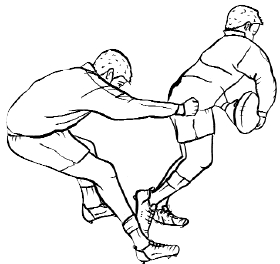
One player with the ball is held by another from behind by the shorts. The held player leans forward and tries to start running. Maintaining resistance, the holder lets the runner move a couple of metres and then releases him. The runner explodes forward from a falling position.
Inject some fresh ideas and never hunt around for a fresh rugby warm-up again with The Ultimate Rugby Warm-Ups Manual.
Mental preparation
Pre-match warm-ups are to alert the mind and body to the game about to be played, without the players getting overexcited or too fired up. The level of alertness needs to be raised slowly, to keep players as calm as possible when they go onto the pitch.
On the psychological side, pre-match rugby warm-up periods should be tactical, not strategic – so don’t stray from familiar territory. For example, make sure that any adjustments you suggest to playing tactics are small ones.
Do's and don'ts
Don't: Add new warm-up drills not used previously.
Do: Build the intensity gradually.
Don't: Start hours before kick off. Physical activity as a team should last for no more than 50 minutes before kick off, though players may want to go through organisational options earlier.
Do: Use game-related activities, especially exposure to contact.
Don't: Stop physical activity for more than 10 minutes, especially on cold days. Bodies cool down and the benefits of an increase in muscle temperature will be reduced.
Do: Make sure there is time for every player to know their role for the day.
Don't: Forget that the referee will want to talk to the team. Ask him long before you start the warm-up about when he wants to do so, as this will avoid disruption.
Do: Remember that different players have different ways to prepare themselves mentally – give them a chance to do so.
Don't: Talk about the season - talk about the match. Break the match down into segments and aim to achieve targets within that time scale.
Do: Allow time for individuals and small groups to practise their individual skills, such as kicking and high ball catching. Time spent here might count for more than a team drill.
Don't: Use ladders. They are a means to an end rather than being game specific. Players focus on a narrow technique, not the wider picture of the game and the skills required.
What should be in a pre-match warm-up?
1. Warm-up warm-up
Run one lap of the pitch to get a feel for all the conditions. Some players might choose this moment to change what they are going to wear (they may be too hot or too cold, or want to change their studs or cleats). Some sides have a little game of touch rugby, again ideal to get a feel for the conditions, as well as reduce the pressure levels.
2. Heart rate up and stretches
Use a series of dynamic stretch exercises and footwork drills, players start to prepare their bodies for the warm-up and related activity. This is a good time to build team cohesion as each exercise should be performed as a group. (See fitness warm-ups in The Ultimate Rugby Warm-Ups Manual.)
3. Handling
Practise handling in small areas to build up ball and game awareness. Use rectangles where groups run across from one line to another, with the width of the square being varied for different skills. (See handling warm-ups in The Ultimate Rugby Warm-Ups Manual.)
4. Unit skills
Forwards and backs need to split to work on moves. The scrum half (9) should go with the forwards, with another back acting as a scrum half with the rest of the backs. This role could be played by a reserve scrum half. (See unit skills warm-ups in The Ultimate Rugby Warm-Ups Manual.)
5. Defence
Individual and team defence can be more than half the game. In the warm-up, time should be spent on preparing the body and mind for tackling and for controlling the tackle area, as well as practising defensive alignment.
For individual tackling it is sometimes worth just working for one minute in slow motion so players can visualise the tackles they are going to make without over exerting themselves.
6. Patterns
An unopposed run through of backs moves is a popular preparation for the game, but it is not favoured by all coaches. Unopposed may work better earlier in the warm-up, but in the last moments before the game, a semi-opposed session may be more beneficial.
Assuming you have no substitutes, then 10 v 5 at half pace can work to help players establish running lines off set pieces and second or third phases. If you have subs, play them in the defence side, before swapping them around. The ten attackers should include scrum half (9) and fly half (10).
PING - Promotes explosive sprinting
Here's an example agility and speed warm-up from The Ultimate Rugby Warm-Ups Manual.

One player with the ball is held by another from behind by the shorts. The held player leans forward and tries to start running. Maintaining resistance, the holder lets the runner move a couple of metres and then releases him. The runner explodes forward from a falling position.
Inject some fresh ideas and never hunt around for a fresh rugby warm-up again with The Ultimate Rugby Warm-Ups Manual.
Newsletter Sign Up
Coaches Testimonials

Gerald Kearney, Downtown Las Vegas Soccer Club

Paul Butler, Florida, USA

Rick Shields, Springboro, USA

Tony Green, Pierrefonds Titans, Quebec, Canada
Subscribe Today
Be a more effective, more successful rugby coach
In a recent survey 89% of subscribers said Rugby Coach Weekly makes them more confident, 91% said Rugby Coach Weekly makes them a more effective coach and 93% said Rugby Coach Weekly makes them more inspired.
Get Weekly Inspiration
All the latest techniques and approaches
Rugby Coach Weekly offers proven and easy to use rugby drills, coaching sessions, practice plans, small-sided games, warm-ups, training tips and advice.
We've been at the cutting edge of rugby coaching since we launched in 2005, creating resources for the grassroots youth coach, following best practice from around the world and insights from the professional game.


